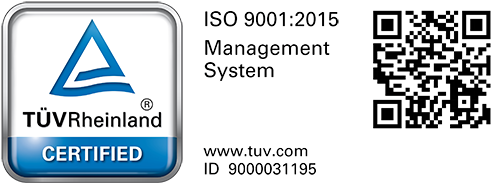Yerevan
Yerevan
29 July 2020 | About Armenia
Historical background: the capital older than Rome
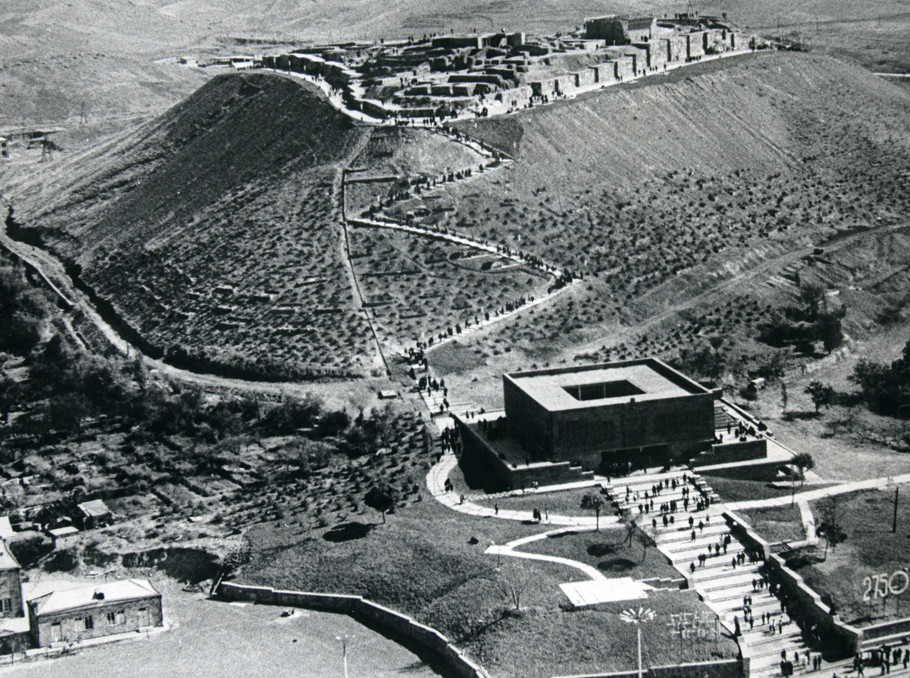 Yerevan is considered to be one of the oldest constantly inhabited cities in the world. Yerevan emerged as a city around the fortress Erebuni, which was founded in 782 BC by the Urartian King Argishti the First. Erebuni was declared as the citadel of the Kingdom, serving as religious and administrative center, as well as the residence of the Royals, namely the King and his family. But it also had another strategic mission, that of protecting the Kingdom from the attacks of the enemies.
Yerevan is considered to be one of the oldest constantly inhabited cities in the world. Yerevan emerged as a city around the fortress Erebuni, which was founded in 782 BC by the Urartian King Argishti the First. Erebuni was declared as the citadel of the Kingdom, serving as religious and administrative center, as well as the residence of the Royals, namely the King and his family. But it also had another strategic mission, that of protecting the Kingdom from the attacks of the enemies.
Thus, Yerevan’s history is counted from the founding date of Erebuni fortress, because it was the major site around which the current day city developed and flourished. Through the centuries and millenniums, the word Erebuni transformed into Yerevan.
Even though 2800 years of history is astonishing enough, Yerevan’s history is much older. Archaeological findings firmly note that early settlements existed in Yerevan in the 4th millenium BC, one of them being the territory of Shengavit (situated in the southern part of current-day Yerevan). Ultimately, Yerevan is older than 2800, even though the official pieces of literature link the birth of the city to the founding of Erebuni fortress.
In 2018, Yerevan celebrated its 2800th birthday. The day (called Erebuni-Yerevan) is a colorful, vibrant and exciting event which annually happens in the second half of October. It hosts many cultural events: national dance shows, concerts of folk, jazz, classical and pop music. Attending any of them is free of charge.
Yerevan nowadays
Nowadays, over 1 million people call Yerevan their home. It’s a city with historical and cultural heritage and a stylish downtown with some great examples of Soviet-era architecture.
Wandering around Yerevan usually starts from the Opera House, officially called Alexander Spendiaryan Opera and Ballet National Theatre. It’s located in the very heart of the city. Most of the main Yerevan sightseeing places are located within the walking distance from the Opera House, like Cascade, Republic Square, Museum of Ancient Manuscripts - Matenadaran, Swan Lake, pedestrian Northern Avenue and historical Abovyan street.
Things to do in Yerevan
* Take a picture at the Republic Square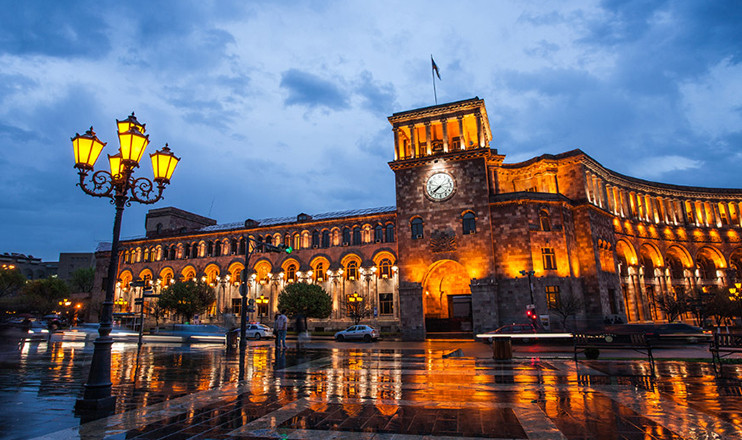
The iconic place, the Republic Square, is one of the architectural breakthroughs of not only Armenia, but of the whole world. Constructed partly from Armenia’s iconic stone, the pink tufa, and partly from an ivory colored stone, Republic Square represents Yerevan’s cultural and administrative center with many of the governmental buildings located there.
Inside the central building of the square one can find the History Museum of Armenia, as well as the National Art Gallery of Armenia. In summer, in front of the Museum, the singing and dancing fountains work here, while in winter the big Christmas tree is installed. International hotel chains Marriott and Hyatt Place are standing on the central northern part.
The Republic square is also the venue for free open-air concerts, happening on the National Independence day (September, 21) and the New Year Eve. In 2018, the Republic Square got a lot of media coverage on the international press, as it was the main venue for demonstrations during the peaceful, non-violent Velvet Revolution that took place in Armenia in the months of April-May, 2018, thus becoming another reason why Armenia is a safe travel destination. The Republic Square thus became the symbol of Democracy.
* Check out cultural events in the Opera House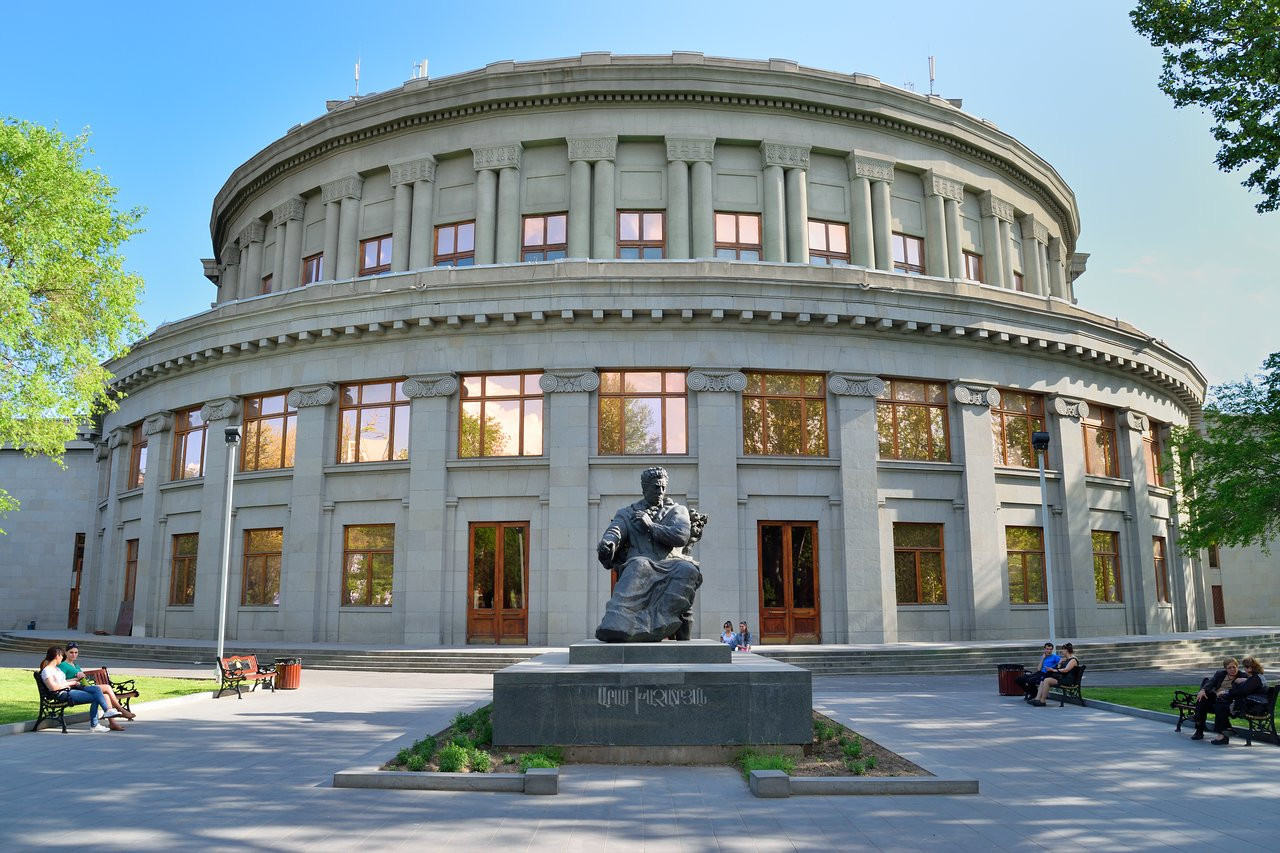
The round-form basement of the Opera House amazes tourists visiting Yerevan. It is located near one of the central Mashtots avenue of the city. The National Theatre of Opera and Ballet is named after composer, conductor and founder of Armenian national symphonic music, Alexander Spendiaryan.
The building is overlooking to many touristic sites, including the France Square, Cascade, North Avenue and Mashtots Avenue. The Opera House is surrounded by the statutes of the three geniuses of the Armenian culture, Aram Khachaturian (composer and conductor), Hovhannes Tumanyan (the greatest Armenian poet), and Alexander Spendiaryan.
Opera House offers a big choice of cultural events: classical concerts, ballet and other dance performances, official award ceremonies, and festivals. Check out the program.
* Climb the Cascade stairway and enjoy beautiful views of the city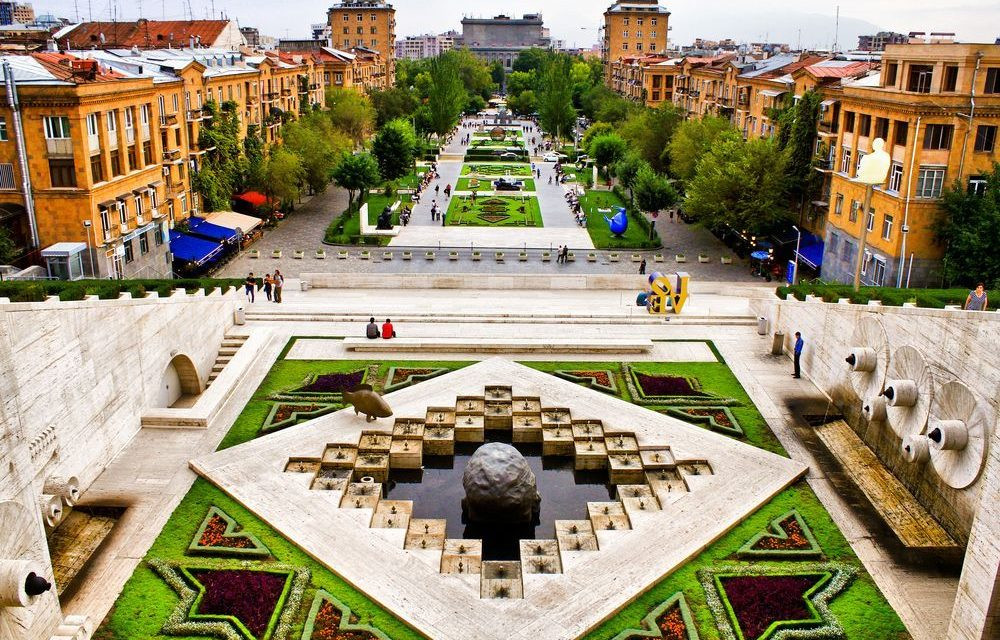
Cascade is an ensemble of more than 572 stairs constructed from a stone of ivory color. The latter is named so because of its architectural form. The Cascade complex now houses the Cafesjian Center for the Arts. The complex consists of several levels of terraces encompassing neatly cared gardens of colorful flowers as well as modern art exhibitions, featuring sculptors like Fernando Botero, Barry Flanagan, Stanislav Libensky and Jaroslava Brychtova and others. You can either climb up the stairs, or take the elevator made inside the complex. With each level, you come up with a better view of the city center and Mount Ararat.
If you love spending time in cozy terraced cafes with wonderful food and drinks, enjoying the evening air without car engines disturbing your rest, and in the meantime getting aesthetic pleasure from contemporary art statues, you should absolutely visit Cascade.
* Get closer to Mother Armenia statue and enjoy the majestic view of Mount Ararat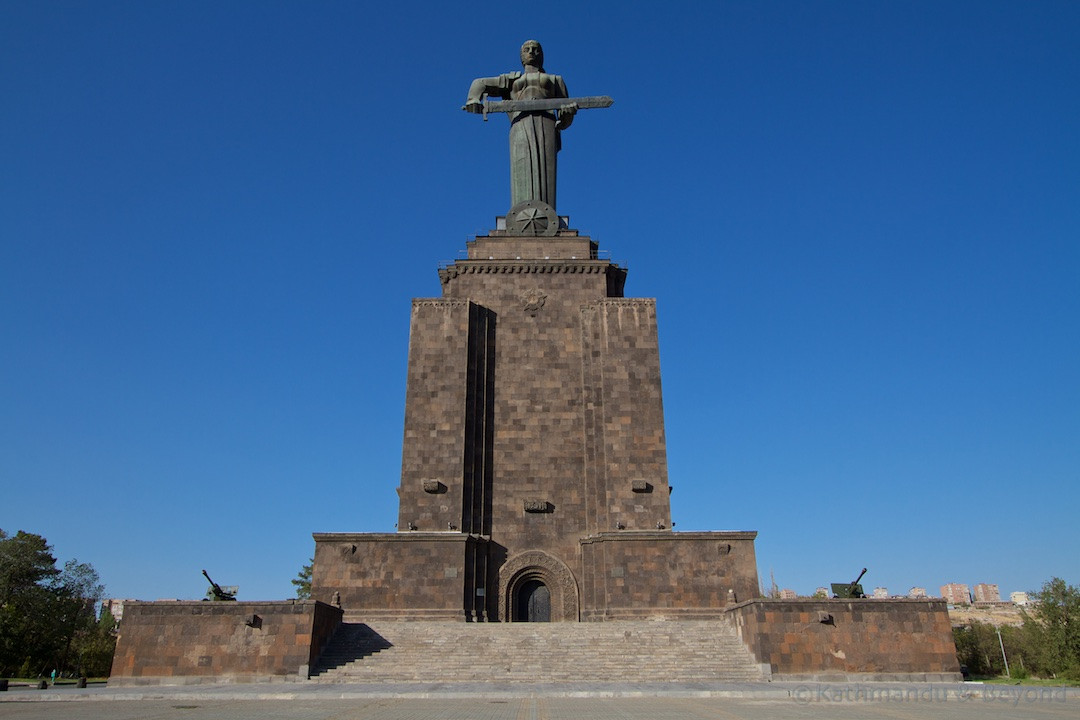
While enjoying the beautiful view of the city from Cascade stairs, also get closer to Mother Armenia that symbolically looks over the city and guards it. Located at one of the northern districts of Yerevan, inside the Victory Park, the statue is said to be the female personification of Armenia, embodying peace through strength. The statue itself is 22 meters long, but as it stands on a high pedestal, its total height makes up to around 51 meters.
Even if you do not necessarily find time to go near the statue, make sure you catch a glimpse of Mother Armenia whenever you walk in the city center: it is quite visible in the distance.
And if the sky is clear, an amazing view of Mount Ararat will take your breath away. According to the Bible, Mount Ararat is the place where Noah’s Ark came after the Great Flood. Ararat is the symbol of Armenia, although it is not in Armenia's current territory today (east of Turkey).
* Explore the foundation of Yerevan – Erebuni Fortress
Are you keen on exploring historical sites? Go to the non touristic area Erebuni to find the ancient fortress founded in 782 BC by the Urartian King Argishti the First. Erebuni fortress is the pillar around which the city of Yerevan was born. The remnants of this more than 2800-year-old fortress stand firmly in the Erebuni district of Yerevan. Near the fortress, you can visit Erebuni museum, where enormous amount of artifacts and findings discovered during excavations are on display.
The Fortress consists of the brown stone walls, overlooking the city of Yerevan from unusual angle. A great place to enjoy the spirit of ancient Kingdom of Urartu and to take the memorable pictures.
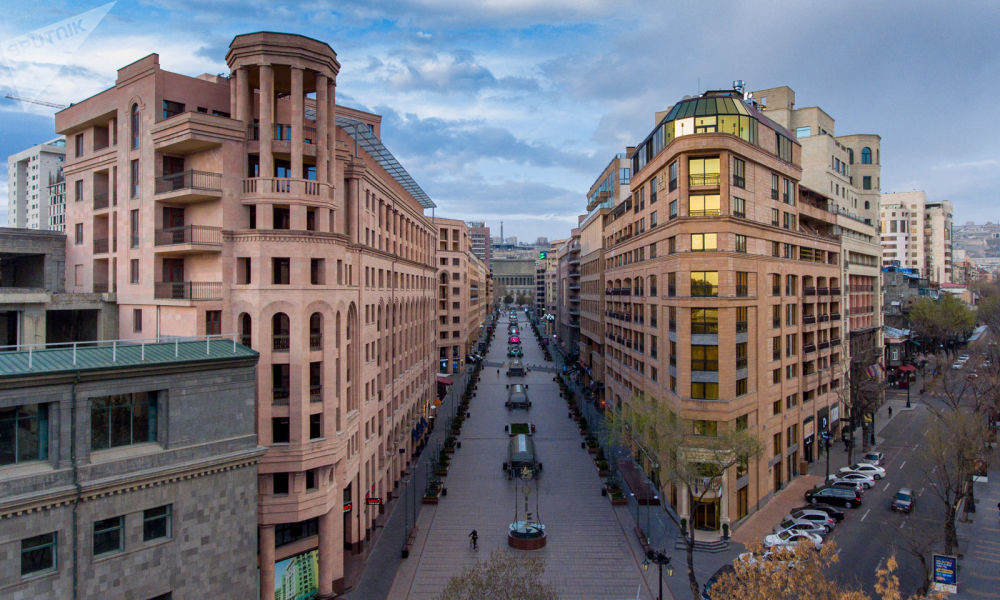 * Walk in the streets of Yerevan
* Walk in the streets of Yerevan
Yerevan is so homelike due to its iconic streets, including Saryan street (commonly referred to as the “wine street” because of the many outdoor/indoor cosy wine cafes located there), Abovyan street, Parpetsi street, Teryan street and many others.
Spend a lazy afternoon in a beautiful surrounding of Dalan art gallery and restaurant (Abovyan str., 12), listen to the retro music in the 2nd floor restaurant and first vinyl store (Abovyan str, 3/1) and enjoy your coffee in the Mirzoyan Library (Mher Mkrtichyan str, 10) – all of them are located in the historical buildings.
Another way to discover the alternative Yerevan is to stroll in the streets of Kond area, which is away from the main touristic routes, but is definitely worth visiting. Residential houses from the beginning of XX century and even a lot earlier, reveal themselves around Kond str, Leo str, Paronyan str. To check more of the city’s cultural and architectural heritage, browse the map at the Other Yerevan website. Besides exploring the area by your own, it is possible to join the walking tour around Kond with the guide.
You should definitely take evening walks in these unique streets if you want to have an idea of what Yerevan architecture, lifestyle and spirit actually are all about.
* Wear Armenian national clothing – Taraz
Wearing Armenian national clothing for women and men, commonly referred as Taraz, is a beautiful and unique experience that would make your trip special. Taraz from several regions of historical Armenia differs in décor and accessories, you can find a great selection. To try Taraz on and have a photo in it, visit the specialized places in Yerevan, like Marashlyan Photo Atelier, Teryan Cultural Center, Lusik Aguleci house museum, etc.
* Shop and bargain in the Vernissage and GUM markets
Vernissage (Buzand Str, 1) open air flea market offers a great variety of souvenirs and handicrafts: magnets, ceramics, jewellery, musical instruments, t-shirts, clothes and bags with traditional ornaments. Take a stroll between the Vernissage rows and make sure you got your kind of souvenir from Armenia! It’s open every day, however, on weekends it’s more crowded and has more variety to offer.
And for these of you who would prefer to shop rather food or snacks, GUM market (Movses Khorenatsi str, 35) is a perfect place for getting the taste of Armenia. Sweet sujukh (known as "Armenian snickers"), vast assortment of dried fruits, sun-dried tomatoes, local herbal tea, Eastern-Armenian spices, fresh vegetables, fruits and many more can be found here. Somewhere within the market you will also discover the bakery where Armenian ladies bake traditional bread Lavash on the sides of the stone oven (called tonir).
*****
Yerevan is actually a lot more than presented above. Most tourists say that, beyond the cultural heritage, it is the hospitality and openness of Yerevan people that makes it so special.
Visit Yerevan and find your own reason to love it!
And don’t limit yourself with visiting the capital only. Armenia has so much more to surprise you with.
armenia.travel
View all
-
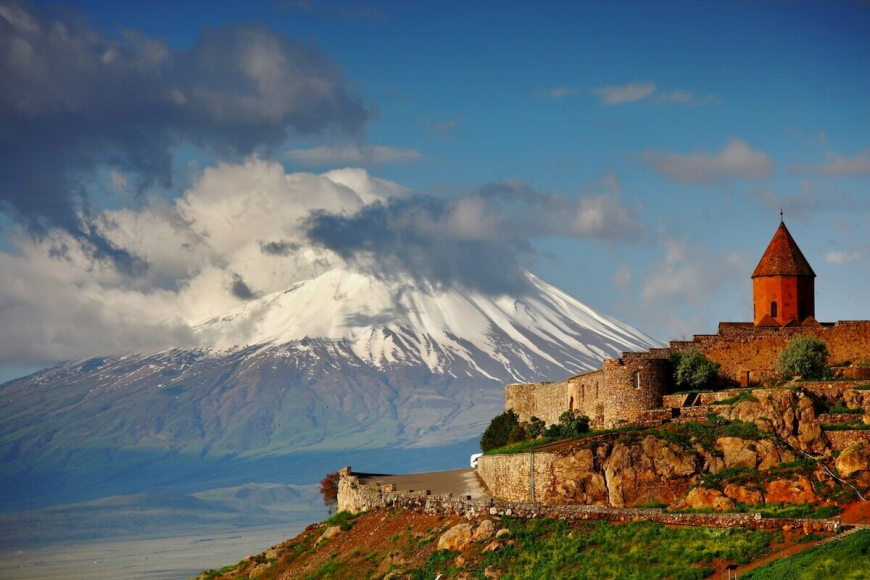
First Christian nation: Armenia.
29 July 2020
-
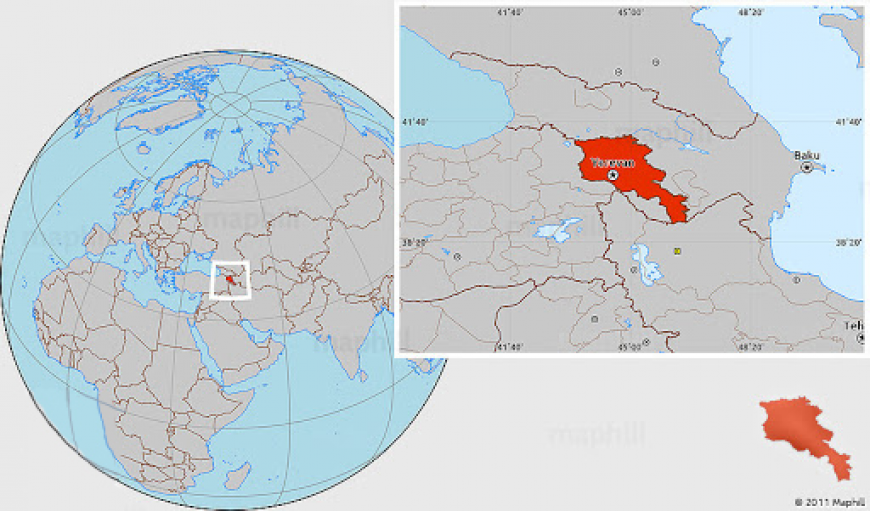
-

Budget direction
30 July 2020
Sign up here for our newsletter


